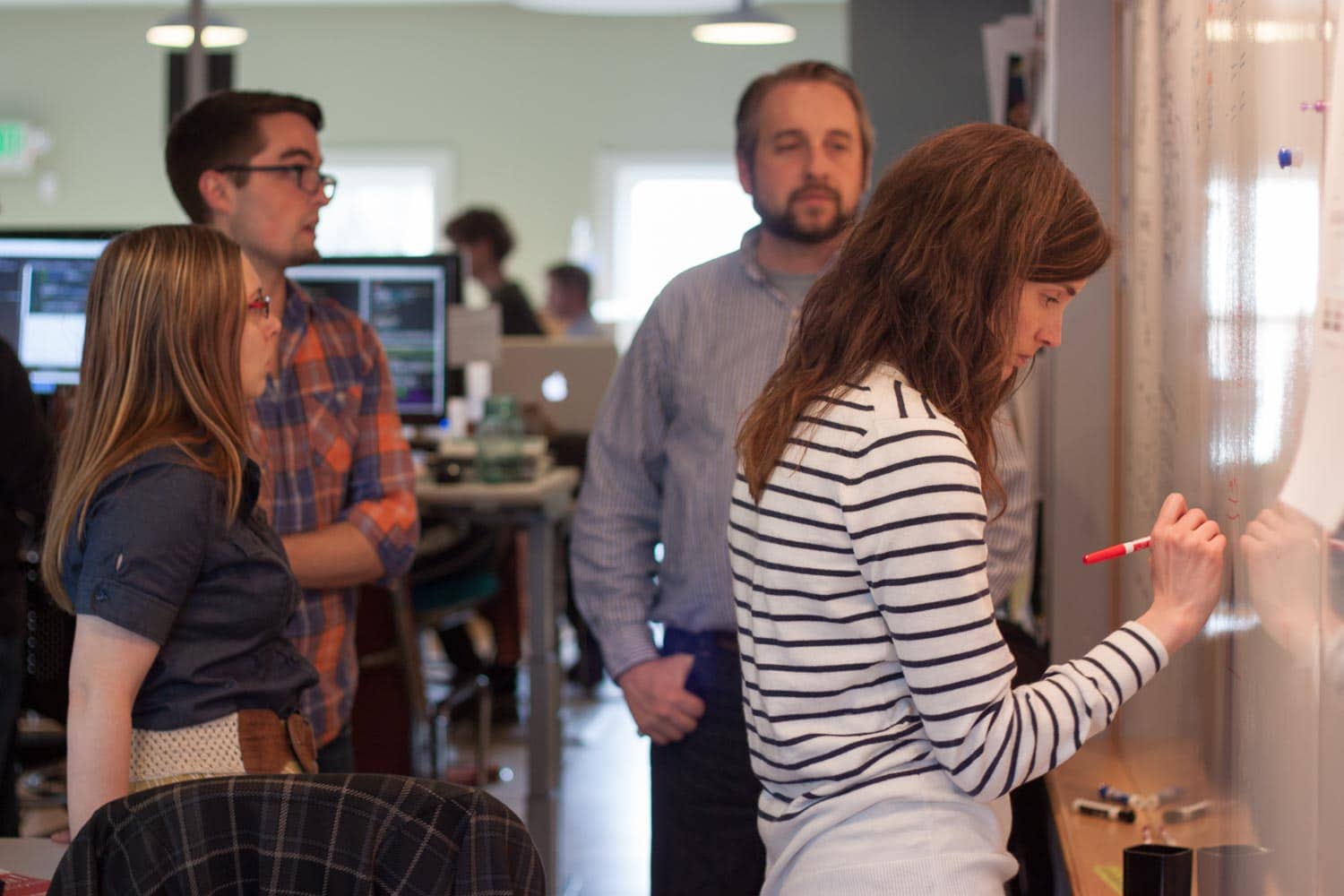Often, teammates who are not designers (by training) will say to me:
Help me make this look pretty. How can we make this look better? I’m not sure what to do here, but what can we do to clean up this screen?
Sometimes designers can be pegged as the person in the office who can make the “pretty pretty” (as my fellow designer Brittany coined it). There are times where I am both flattered by this, but I also find it difficult.
Visual design is less about:
- Making things “look better”
- Trendy swashes, fonts, or patterns
- Likes or dislikes
It’s more about…
- Creating visual systems that establish hierarchy and order
- Finding the right balance between consistency and delight
- Communicating a brand personality
- Making complex problems simple
The Function of Aesthetics
Aesthetics do have a function. Studies show that emotions play an important role in the users’ experience. If a website has a pleasant visual design, users are more relaxed, and they have a better first impression.
A study on the role of aesthetics concluded that, though attractive things may not score higher in performance, people perceive attractive things as more usable.
Studies like this one change the question from “Why does visual design matter?” to “As designers and product teams, how can we leverage design to influence behavior and emotion?”
Integrating Visual Design – Beginning to End
So what are some things we can do as product teams to allow visual design to be integrated into our process?
- Develop a clear typographic and visual hierarchy. For example, if you’re designing an interactive product, start establishing H1-H6 and other styles, even in the wireframing stage. Then, build layers of fidelity as the product team is ready.
- Follow consistent patterns. Challenge yourself and your team to not reinvent the wheel every time you’re designing a new feature. Create enough variation to keep users engaged, but not so much variation that they get frustrated by always having to learn a new trick.
- Solve problems with the simplest solution possible. Both for budget and user experience reasons, strive to define the problem well, and then solve the problem simply.
- Communicate a consistent brand personality. Try to avoid decorating or adding unnecessary visual styles. Remember to trim back styles if you’ve gone back to far. Sometimes a “design refactor” is needed on bigger projects—go back and clean up the style guide or mock ups to trim down on excess clutter.
What are some things that your teams do, as a product team, to better integrate visual design practices?
This article and its content are inspired by a talk I gave at Atomic Con. The full presentation is available on SpeakerDeck.

